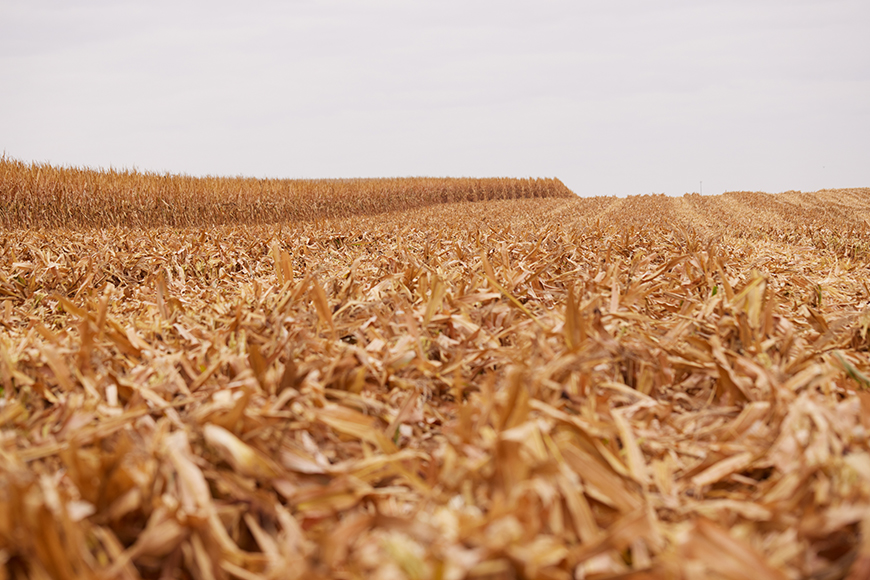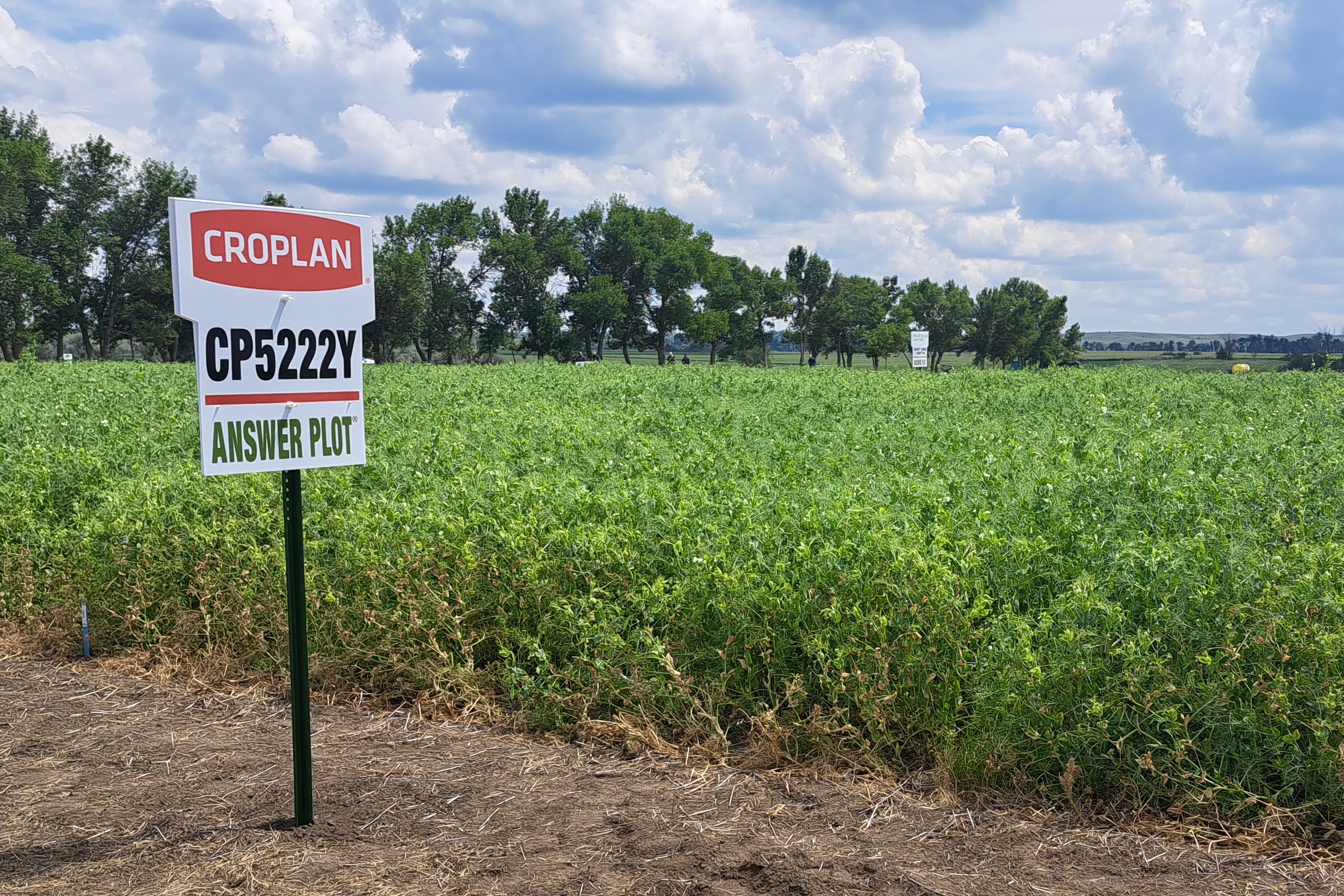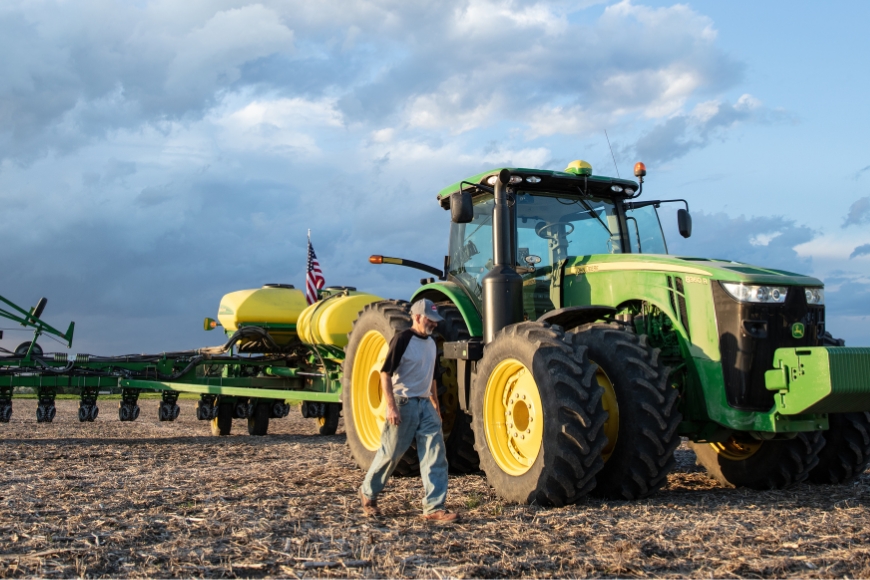5 Things To Do This Fall to Get a Head Start on Next Season
Randy Brown, Ph.D.
Market Development Agronomist Lead

While there’s still some work to do to finish out this season, it’s not too early to start planning for your next crop cycle. The earlier you start planning, the more margin you’ll have to pivot your strategy if needed. Here are five things you can do this fall to get a head start on next season.
1. Plan Your Harvest Strategy
Now is the time to evaluate your fields to identify which ones should be harvested first. Check grain moisture, assess stalk quality and overall plant health to determine if fields are at risk of lodging. Lodged fields can reduce yield potential and harvest efficiency. As you scout fields at harvest time, look for signs of insect damage or disease infection, which can help inform your crop protection strategy for next season.
Corn is physiologically mature at around 32% moisture. However, most growers prefer to harvest at lower moistures to reduce drying costs. While there isn’t an exact science for determining the right time to harvest, you should consider weather conditions, grain prices, drying costs and risk of field loss to help guide harvest timing. The Iowa State Corn Dry Down Calculator provides corn dry-down predictions based on local field conditions for states in the northern Corn Belt.
2. Evaluate Seed Options
You may have already started seed conversations for next season, but evaluating harvest data before making those final decisions can be helpful. Work with your local agronomist to discuss how your hybrids and varieties performed this season. Did your selections meet yield expectations? If not, consider what you could do to improve outcomes next season. Perhaps you need to tweak management practices, or maybe a different seed product would better fit those acres.
Your CROPLAN® retailer has access to years of historical Answer Plot® data, which can help you understand what management practices maximize your seeds’ potential. Local yield data from the Answer Plot program can also help you understand which products perform best in field conditions like yours.
As you compare seed products, keep agronomics top of mind. Review emergence ratings, disease resistance packages, stalk integrity scores, insect and herbicide trait options, seed treatments and genetics to find the best fit for your fields. The 2025 CROPLAN® seed guide is an excellent resource for comparing the agronomic characteristics of various varieties and hybrids.
3. Prepare a Fertility Plan
An efficient and effective crop nutrition plan is one of the best ways to maximize your profitability potential. Optimizing crop fertility by giving plants just the right amount of fertilizer they need when they need it can reduce nutrient losses while ensuring adequate plant nutrition. Start by taking soil samples in the fall and reviewing yield maps to establish a baseline for fertilizer rates.
Soil sampling can also tell you whether your soil pH is in a suitable range for optimal crop growth. Generally, soil pH should be between 6.0 and 7.0 to prevent nutrient tie-up. Some micronutrients, including manganese and boron, are more available in slightly acidic soils. Knowing where your soil falls on the pH scale can help you manage nutrient applications for maximum availability. For example, if soil sampling reveals slightly acidic conditions, adding lime in the fall can help raise those levels to aid the uptake of critical macronutrients the following spring.
Fall is a great time to apply nitrogen, potassium and phosphorus to balance spring workloads. Maintenance-level applications replace the soil nutrients removed by the previous season’s crops. To maximize yield potential, plan to increase fertilizer rates based on critical soil test levels and the expected yield potential of next season’s crop.
I highly recommend protecting fall-applied nitrogen with a nitrogen stabilizer like N-Serve® or Instinct®. These products keep more nitrogen in the root zone by reducing the risk of leaching and denitrification. Across 453 trials over six years, there was an average 8.9 bushel per acre yield increase when Instinct and N-Serve were applied to corn.1
4. Take Care of Weeds
In some situations, a fall herbicide application may be warranted to stay ahead of weeds that can compete with emerging crops in the spring. Minimum and no-till fields with a history of winter annual weed populations are ideal candidates for a fall burndown.
The tank mix for the fall burndown can be relatively simple and may be more cost-effective than trying to control larger weeds in the spring. Your retailer can recommend the best herbicides based on the weed spectrum in your fields.
Fall tillage is another option for weed management. The drier fall conditions are ideal for deep tillage, which is beneficial for preparing the seedbed for planting and managing crop residue.
5. Maintain Equipment
Without reliable equipment, a smooth planting season is difficult. The post-harvest months are perfect for carving out time to maintain and update machines. Here’s a short checklist to get started.
- Switch to a seasonally appropriate fuel blend for diesel-powered equipment.
- Check and replace anti-freeze, hydraulic fluid and engine oil as needed.
- Clean equipment thoroughly after harvest to protect against corrosion and rodent infestations.
- Inspect parts for wear and tear and replace worn components. Schedule a service with your equipment dealer.
- Perform software updates on equipment technology and archive data so you’re set to start fresh in the spring.
- Update maintenance records.
The post-harvest season offers a critical window of time to help balance the spring workload. If conditions allow, take these five actions to relieve some of the burden next season. Contact your CROPLAN retailer this fall to help put next year’s plan into motion.
1 Based on Verdesian Life Sciences and Dow AgroSciences data on file.
All photos are either the property of WinField United or used with permission.
© 2024 WinField United. Important: Before use always read and follow label instructions. Crop performance is dependent on several factors many of which are beyond the control of WinField United, including without limitation, soil type, pest pressures, agronomic practices and weather conditions. Growers are encouraged to consider data from multiple locations, over multiple years and to be mindful of how such agronomic conditions could impact results. Answer Plot, CROPLAN, and WinField are trademarks of WinField United. All other trademarks are the property of their respective owners.
IF YOU LOVE OUR INSIGHT, YOU’LL LOVE OUR ROI POTENTIAL
Every successful harvest starts with a seed. It just can't end there. Choose which high-performing seed products you’ll start with this season.






